The flight of the Spanish Imperial Eagle
It was spring 1992 when I was first aware that I was watching a Spanish imperial eagle. Visiting the then Monfragüe Natural Park with a couple of friends, on a cold, grey day, we decided to stop at the Mirador de la Báscula viewpoint. Access to the viewpoints and the other tourist infrastructure was a far cry from what it is today. Close to the ruins of a small building, two tourists, who I seem to remember were German, were watching, wide-eyed through their astronomical telescope… Terrestrial telescopes were still thin on the ground in those days. I didn’t need to even ask them what they were looking at, as they beckoned me over to take a look as they happily exclaimed “Eagle!”. In the back to front image a large raptor was clearly visible in the far distance. Under the dull conditions and against the diffuse green background of the cork oak crowns, two features stood out: a creamy coloured head and the bird’s snowy-white shoulders. I knew almost nothing about warblers, shorebirds or gulls, but I knew all the raptors… and quite well. My heart started pounding with the emotion. A few seconds later I took my eye from the telescope, thanked my improvised ‘hosts’ and returned to my friends with a beaming smile stretching from ear to ear!
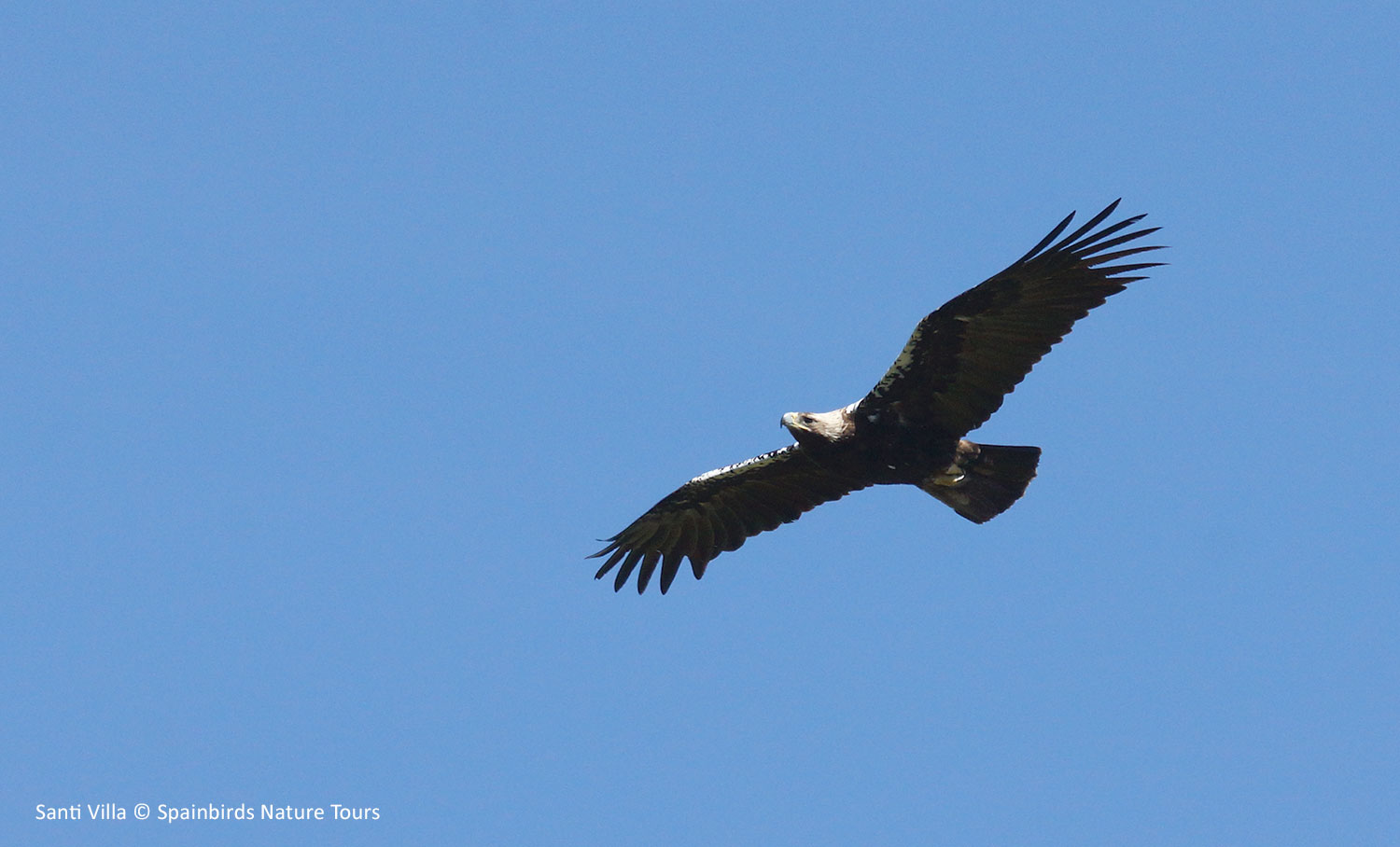
Spanish Imperial Eagle (Adult, May 2014) - Monfragüe N.P. (Extremadura)
Shortly after that first encounter with a Spanish imperial eagle (Aquila adalberti) I had to write an investigative news piece for the university. It was my second year of my journalism degree and our journalistic writing tutor allowed us to decide our own theme. Still marked by those few, but thrilling seconds in Monfragüe, I chose to write about the imperial eagle. I started gathering cuttings from Natura magazine and visited the National Newspaper Library, in addition to buying a couple of books and organising an interview with personnel of the former ICONA in order for them to pass me data on the latest census results. All this helped me to learn much more about what was then considered to be the rarest raptor in the world… And earned me an “Outstanding” classification as a result! (Openly admitting that I didn’t get many more during my 5 year degree course). I knew that despite a timidly growing population of almost just 90 breeding pairs, it faced many threats: poison baits, electrocutions, illegal hunting, habitat loss, cainism amongst the chicks… In addition, its dependence on a diet based almost exclusively on the European rabbit placed it against the ropes, given repeated outbreaks of myxomatosis and haemorrhagic viral disease devastating its preferred prey species. A far from certain outlook was on the horizon for the most Iberian of our raptors.
As my interest in birds grew and consolidated, I continued to follow the evolution of our Spanish imperial eagle population with special attention. I read everything I could lay my hands on about the species. The articles published in Quercus magazine and the monograph of the species by Miguel Ferrer were crucial to placate my curiosity for the species. I had also been able to observe them with some frequency in the Monte de El Pardo park in ‘94 and ’95, during which time I was also able to study a pair of Spanish imperial eagles at distance. During this study, I was able to observe copulation, courtship feeding by the male to the female, the growth of the chicks… A powerful hailstorm in spring 1995 led me to fear the worst… I can still remember the anxiety and the long wait as I sat behind my first ever telescope, until finally, two small cotton balls rose up between the branches and twigs of the eyrie.
A few years later, in 1999, I started to guide my first foreign tourists. Frequently, birdwatchers from other countries who were visiting Madrid for business or family holidays would find a gap in their schedules to go birdwatching, even if for only a day or even just a few hours. Almost all of them were drawn together by one primary objective: they wanted to see a Spanish imperial eagle. Together with its restricted world distribution (it still hadn’t started to breed again in neighbouring Portugal), its beauty and rarity added to its attraction. This was an endemic species and also given that it is a large raptor, there were more than enough reasons to contract the services of a local guide to guarantee its observation. And so it was that during those first orientative moments of Spainbirds that the Spanish imperial eagle became one of my main allies in scanning a professional horizon tied to the world of birds. Not only that, but Madrid held the highest density of breeding pairs anywhere and I knew where they could be seen with relative ease.
The take-off of the Spanish Imperial Eagle
Following a successful information campaign and considerable financial investment in its conservation (in large part coming from the European Union through LIFE Project funding), despite the anxiously awaited Coordinated National Plan for the species not reaching fruition, good news finally started to be heard regarding the evolution of its populations. The 2001 census revealed 158 breeding pairs in Spain and some of the factors limiting population growth appeared to be in decline. Three years later, in 2004, a total of 193 pairs were censused. The censusses throughout the following years showed continuous growth, reaching such that in 2011, 325 pairs were reached, thanks in large part to a population explosion of the species in Castilla La Mancha, where it had gone from 41 pairs in 2001 to 113 pairs in that magical year. In 2014 Andalusia held over 100 pairs and Castilla La Mancha already 178 pairs. The Spanish population was by now around the impressive 430 breeding pair mark!
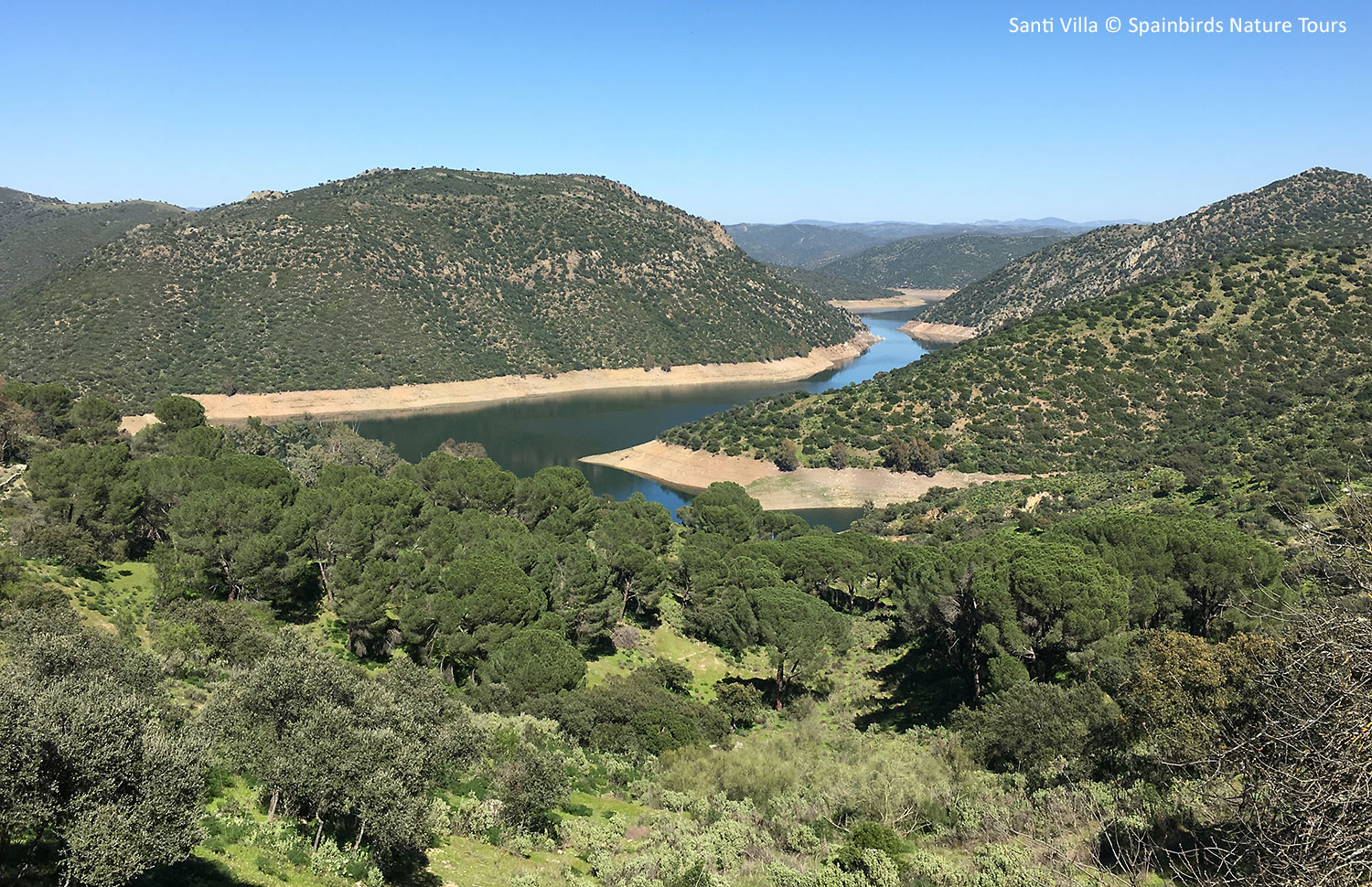
Typical Mediterranean woodland ecosystem where most of the Spanish Imperial Eagles breed - Andujar N.P. (Jaen)
In addition to mitigation of the causes of its decline since the early years of the 21st century (fundamentally a reduction in the deaths due to poisoning and electrocution), a series of measures were undertaken which lead to a rapid increase in the population, such as supplementary feeding of pairs in territories with scarce food resources, the periodic reintroduction of rabbits, surveillance of nests susceptible to human disturbance as well as of chicks in order to avoid cainism, and even a greater acceptance by the owners of hunting estates thanks to the information supplied pointing out the benefits of having Spanish imperial eagles in their estates. Reintroduction programs were alsoundertaken, such as that in the Cadiz Province where between 2002 and 2015, 87 chicks were released, having come from the excess population of the Sierra Morena. The Cadiz breeding population has now consolidated in some 6-7 pairs and only chicks stemming from recovery centres in other parts of Andalusia are now released there.
Natural colonisation of new territories
If the increase in the Spanish population over the past 20 years has been comforting, the situation in Portugal is at least hopeful. Since breeding of the first pair there in 2003, the population has continued to grow, slowly but surely, and at least 17 breeding pairs are now present. In consequence Spanish imperial eagles now breed in the shires of the International Tagus, Castro Verde, Guadiana Valley and Mourão (Alentejo). Of special note is the case of Castilla y Leon, where in 2009, imperial eagles began to breed in Valladolid province for the first time, in 2015 in the Salamanca province, in 2018 in Zamora province and finally in 2019 the first occupied territory was discovered in Burgos province. This compares starkly to the 1990s where it was only present as a breeder in Segovia and Ávila provinces.
An increase in the Andalusian population has also led to the occupation of new locations there, with the first breeding pair reoccupying territory in Granada detected in 2017, following decades of absence. This same year a small breeding nucleus established in the Jaen mountains. Additionally, the rapid spread of wild rabbits in the south and south-east of the Community of Madrid over the past few years has provided the definitive support that imperial eagles needed to colonise new territories, such as those recently currently present in the Henares catchment. In 2019, a total of 73 pairs reared 93 fledged young.
In Castilla La Mancha, the species started to breed in the province of Albacete in 2008, where in 2020 at least 12 of the 16 known pairs present were breeding (Rafa Torralba, com. pers.). In the Cuenca province, breeding was first confirmed in 2018, with at least 4 breeding pairs already by 2019.
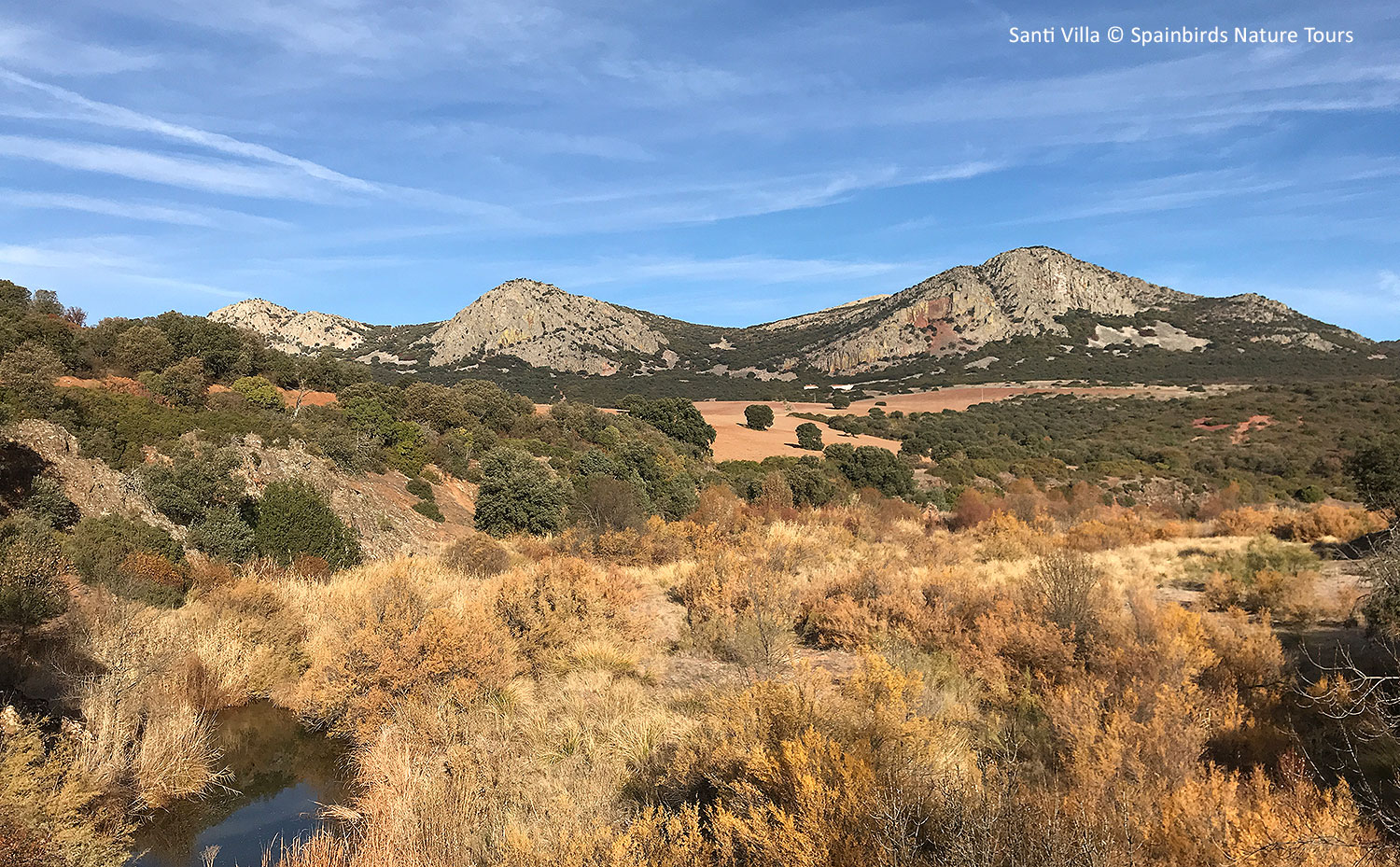
The known as Sierra de Relumbrar is one of these new colonisation places where the first ever nesting pair in Albacete province was found in 2008.
Current world population of the Spanish Imperial Eagle
The last official census published for the Iberian Peninsula (and in consequence for the world), dates from 2017. A total of 536 territories were known, with 520 of these in Spain and 16 in Portugal, confirming the clearly increasing population trend in the species. Following internet searches and after dialogue with some of the people responsible for coordinating the regional censuses of the species, we can now give quite precise population data for the Spanish imperial eagle in 2019 as follows: Castilla y León: 103 pairs (140 fledged young), Madrid: 73 pairs, Andalucía: 116 pairs (in 2020 this increased to 123), Castilla La Mancha: 262 pairs (with 39 more pairs compared to the anterior census of 2018), and Extremadura 58 pairs (56 in 2018, data from the Junta de Extremadura). Consequently, the total estimated world population of the Spanish imperial Eagle in 2019 is 629 pairs, including the 17 confirmed breeding pairs in Portugal. This signifies an increase of 93 pairs in just two years and an increase of 17.3%. Given the absence of oficial data from the latest 2020 breeding season (only the data for Andalusia is known) and taking into account an annual population increase of 8-9%, the current population can be estimated at around 680 – 685 breeding pairs. As we await the official data corresponding to 2018, 2019 and 2020, the true situation would appear to be close to that given here.
Various conclusions can be made, including that the population continues to increase year on year, it is rapidly colonising new territories and that it can adapt to ecosystems which are not exactly pure examples of Mediterranean scrub and woodland habitats, with pseudosteppe habitats standing out in this sense. The presence of a sufficiently healthy rabbit population to support the adult population throughout the year, as well as the chicks during the nesting period, appears to be crucial and determinant.
Identification of Spanish Imperial Eagles by age groups
In addition to the review of the current populations and tendencies shown by the species over the past few decades (based on multiple sources and complied in this report), we also wish to contribute in a more informative and graphic (rather than scientific) manner, by demonstrating the principle plumages that our Spanish imperial eagles show in the field, related to their age. As noted, this aims to be a more practical than scientific selection of images, though we have tried hard to not deviate from the rigour that the many years of field experience through observation has provided us. Twelve of the twenty-two photos presented here were taken by our colleagues at Photoraptors at their hides located in the Sierra de San Pedro (Extremadura), and we are very grateful for their contribution. The remainder were taken by myself across the length and breadth of the Spanish countryside by myself over the last 10 years. Without wishing to sound pretentious, this is possibly the most complete and accessible collection of photographs to show how Spanish imperial eagles change in appearance over time. There may be a previously published more rigorous and in-depth article or report, but following intensive searches on internet, we have been able to find anything similar. We also wish to call on others to collaborate with the report in order to incorporate new photographs of plumages which are not represented in this article. Please feel free to send your images to info@spainbirds.com indicating date, location and author, and once we have studied the plumage and quality of the photograph, it will be included in the following gallery.


Spanish Imperial Eagle (Juvenile, 1st Summer, September) - Sierra de la Plata (Cádiz)
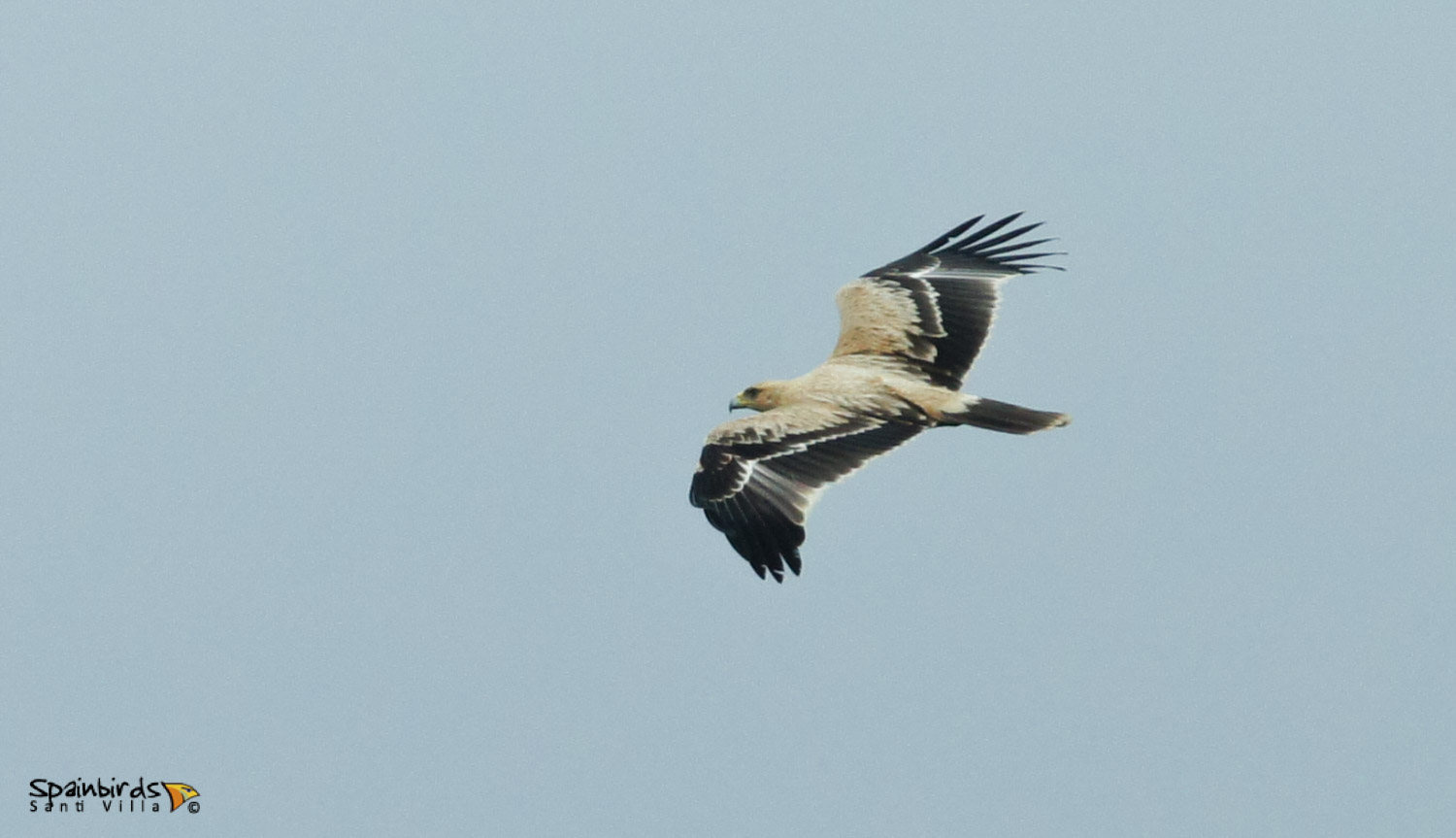
Spanish Imperial Eagle (1st Winter, December) - Doñana N.P. (Huelva)
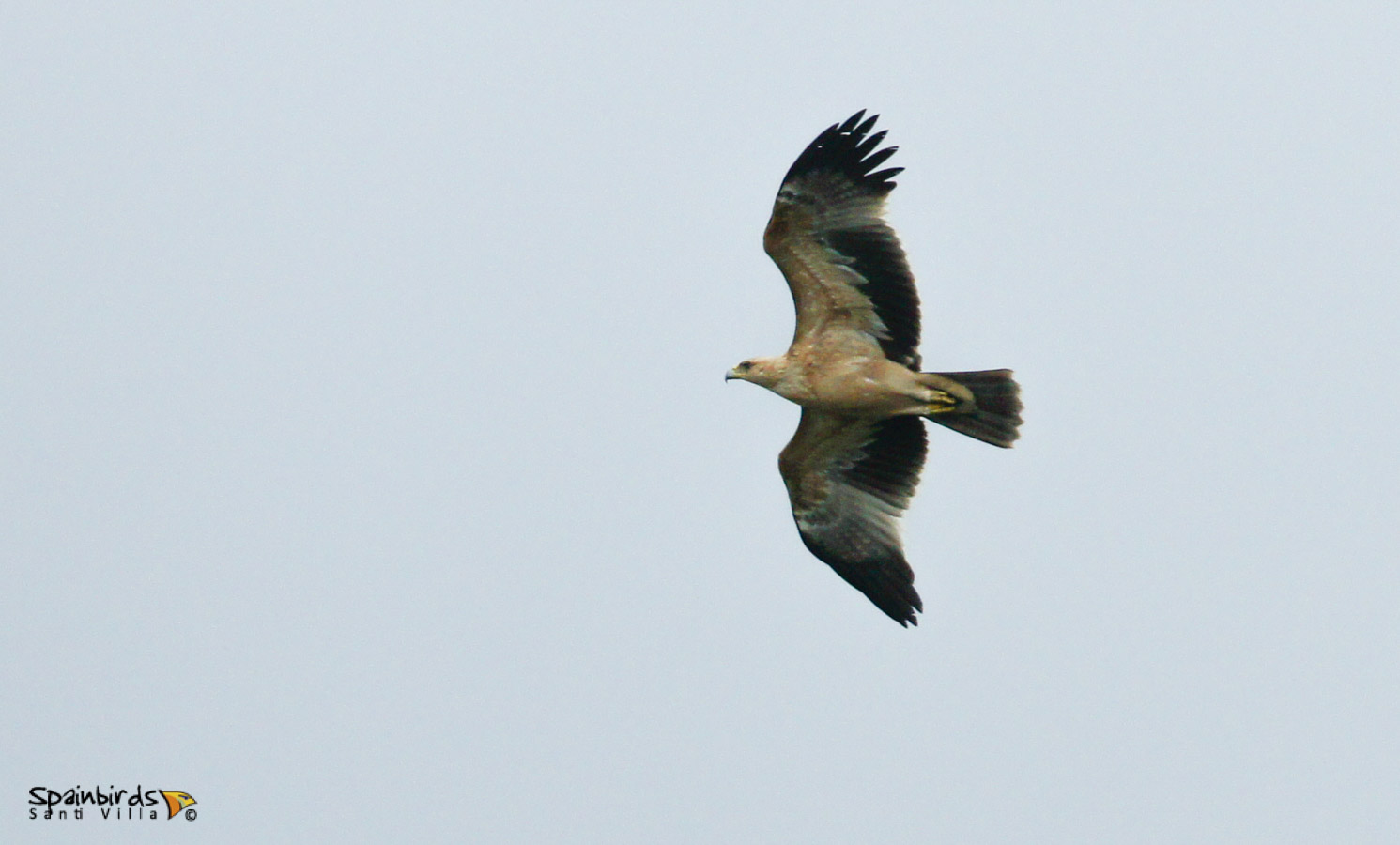
Spanish Imperial Eagle (1st Winter, December) - Doñana N.P. (Huelva)
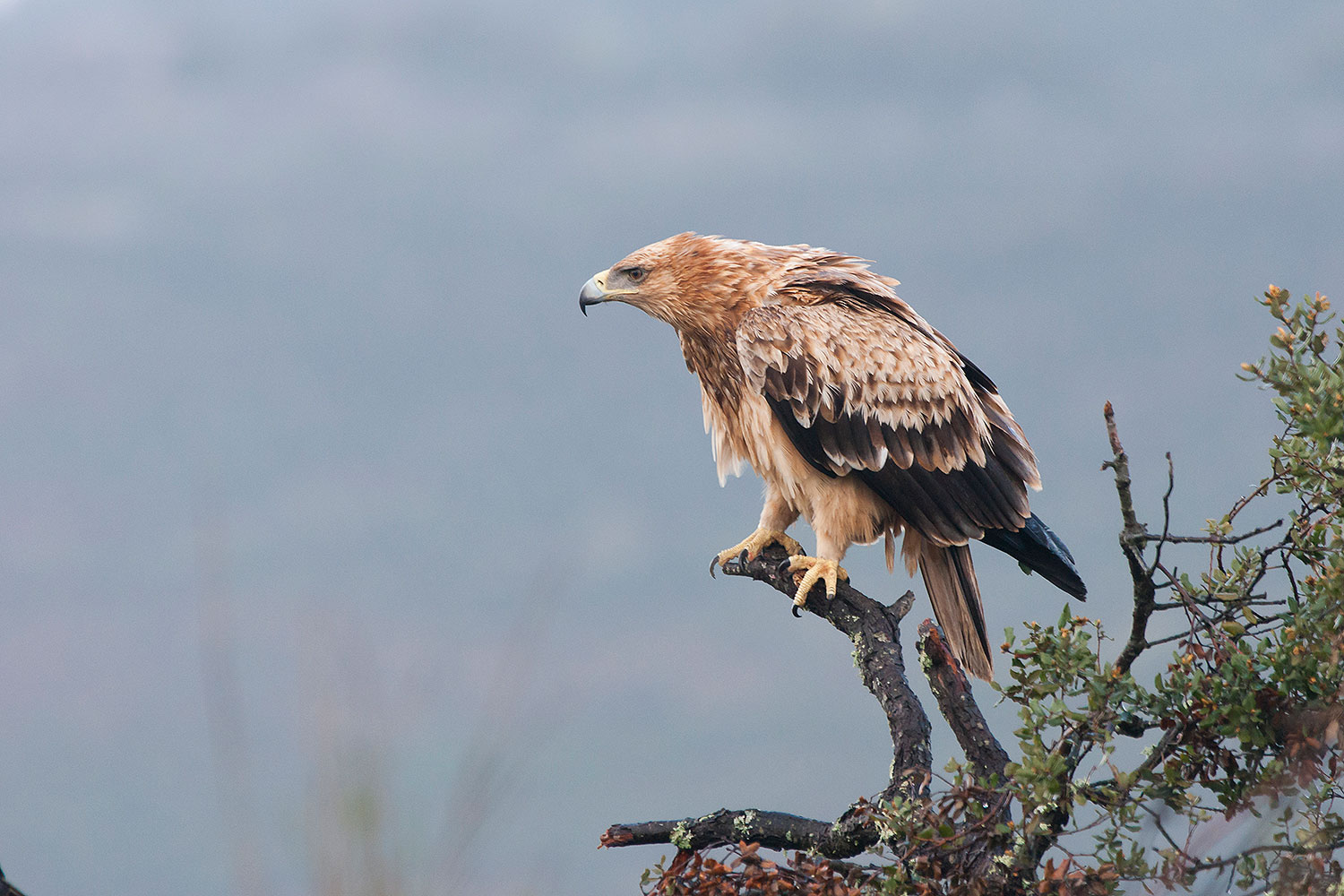
Spanish Imperial Eagle (2nd calendar-year, March) - Sierra de San Pedro (Extremadura)
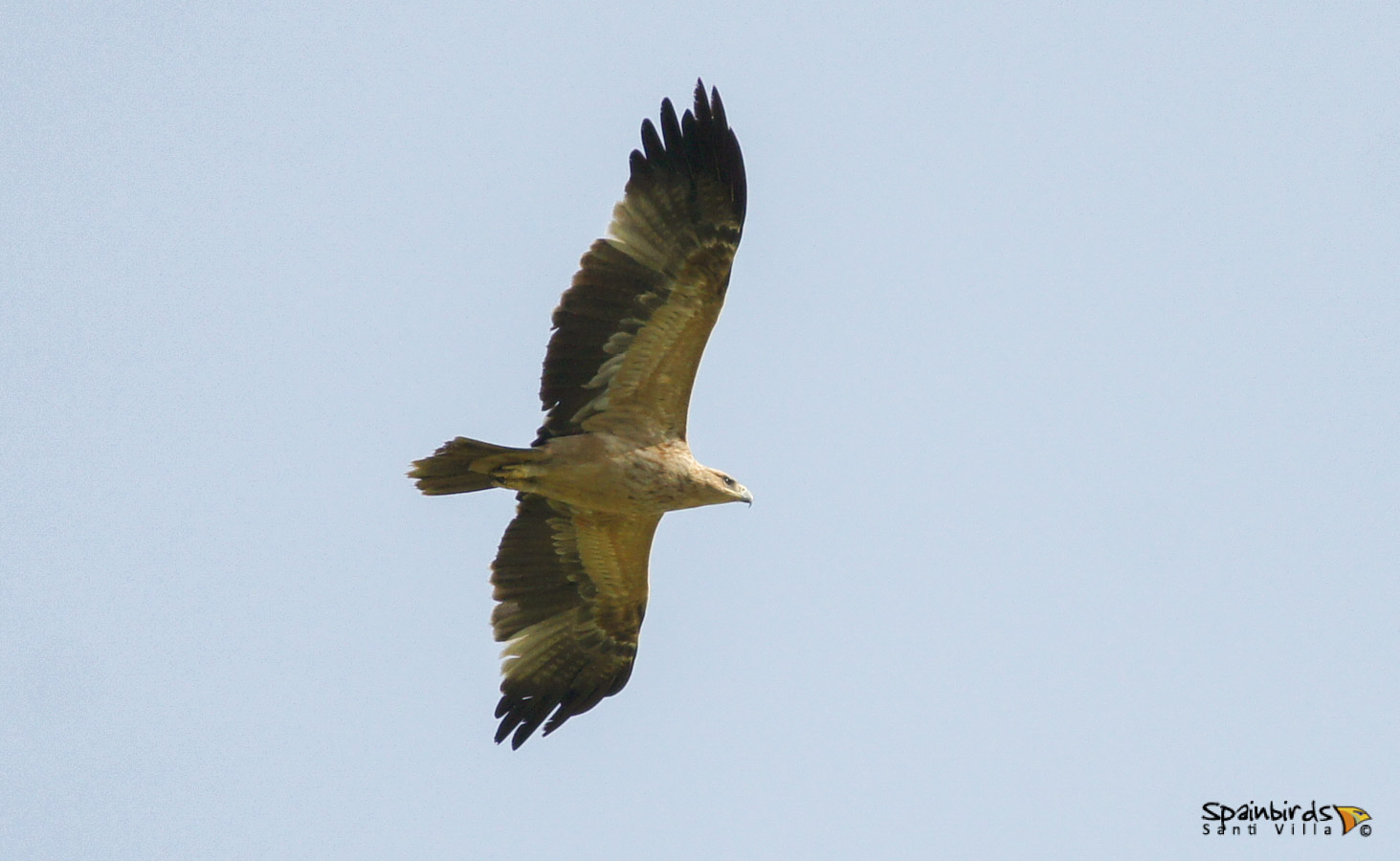
Spanish Imperial Eagle (2nd calendar-year, April) - Calera y Chozas (Toledo)
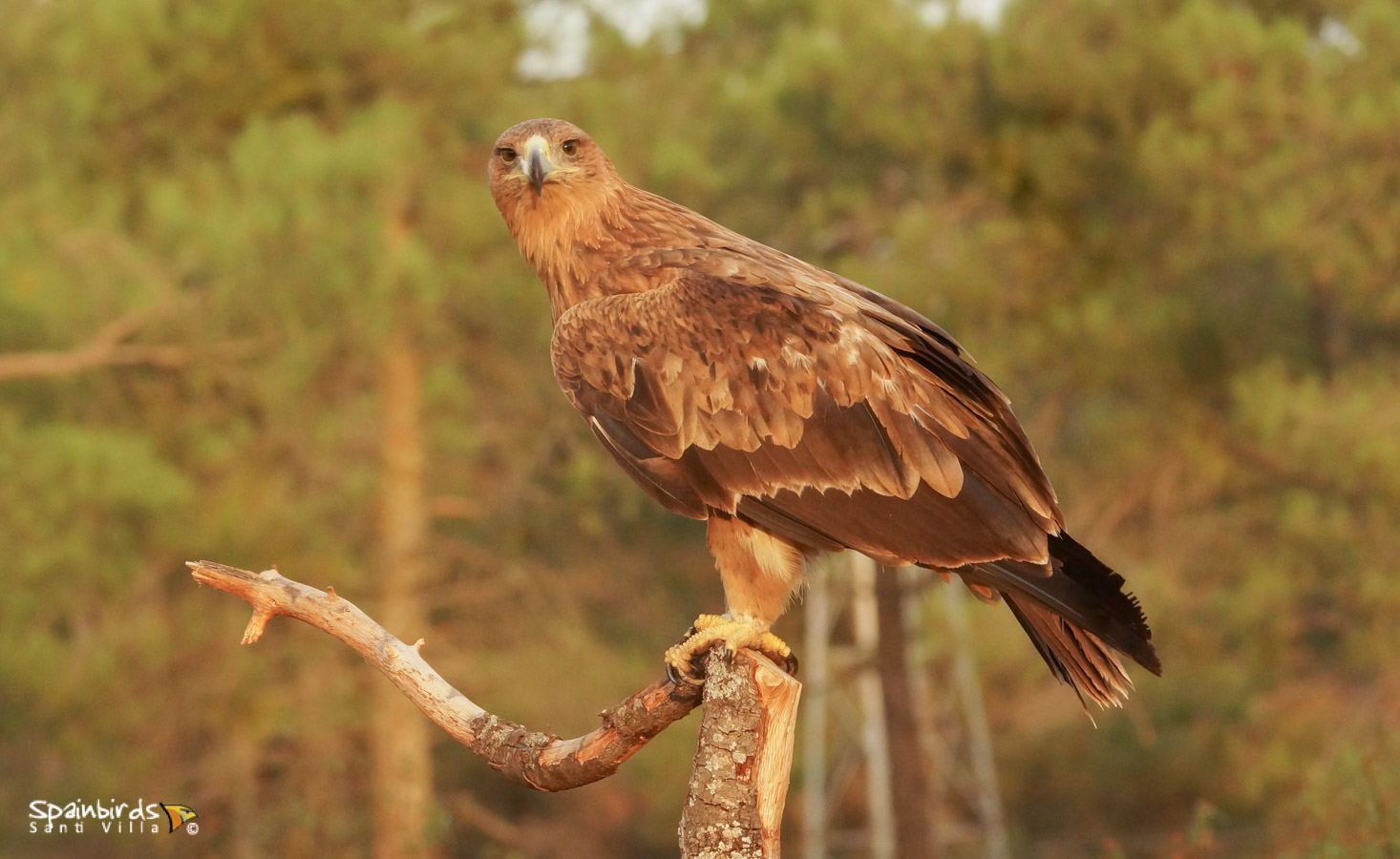
Spanish Imperial Eagle (2nd calendar-year, August) - Guadarrama Mnts. (Madrid)
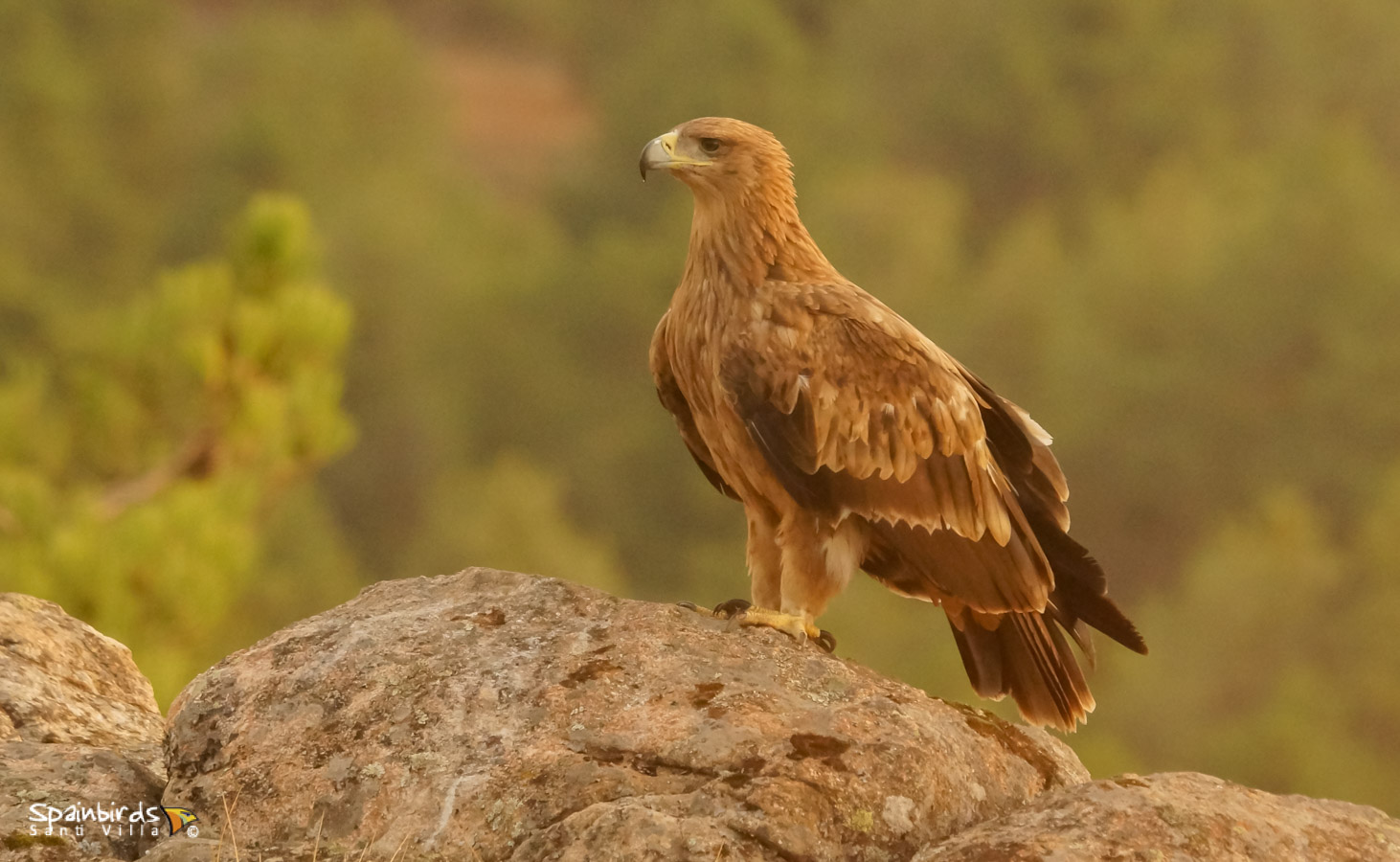
Spanish Imperial Eagle (2nd calendar-year, August) - Guadarrama Mnts. (Madrid)
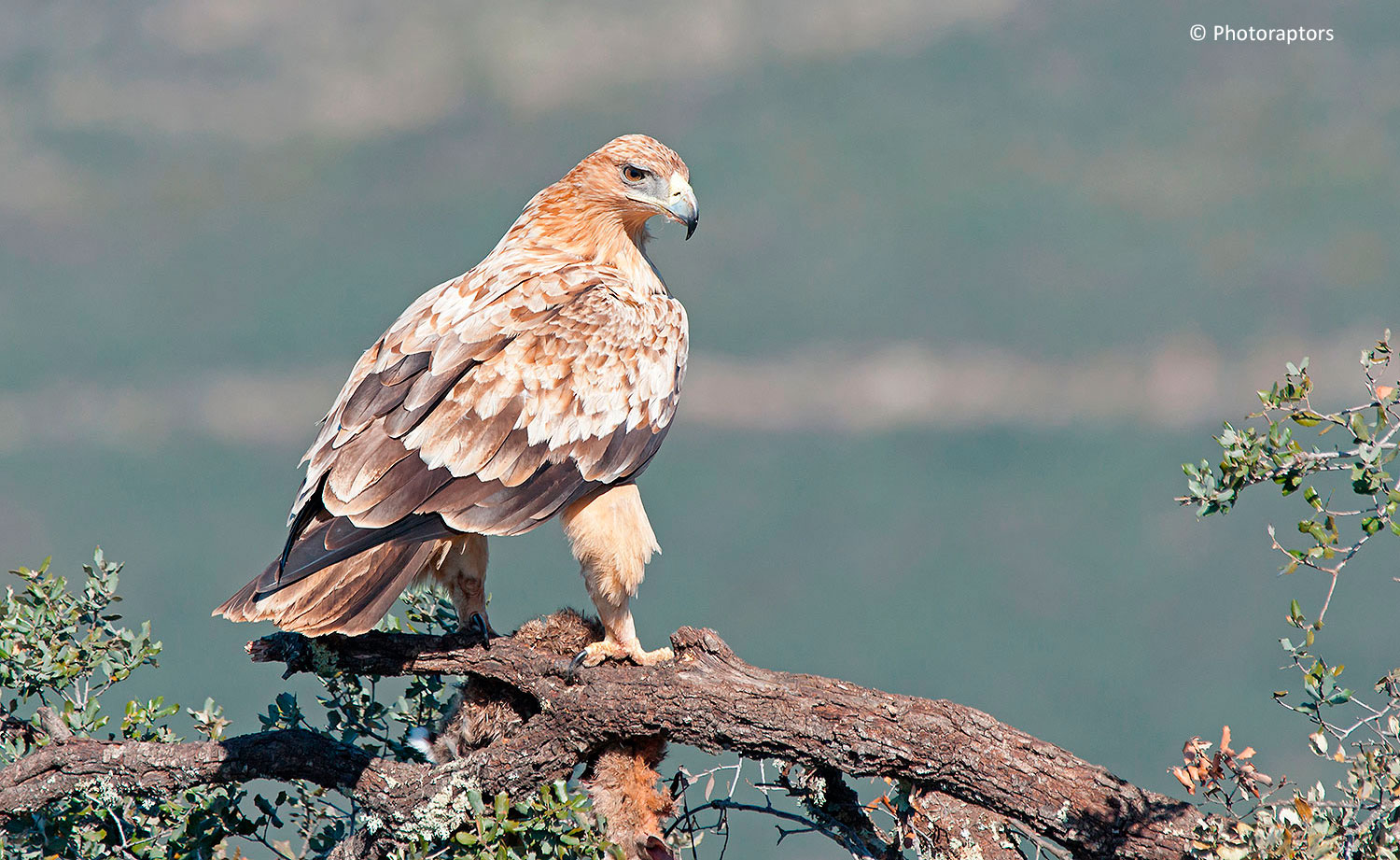
Spanish Imperial Eagle (3rd calendar-year, February) - Sierra de San Pedro (Extremadura)
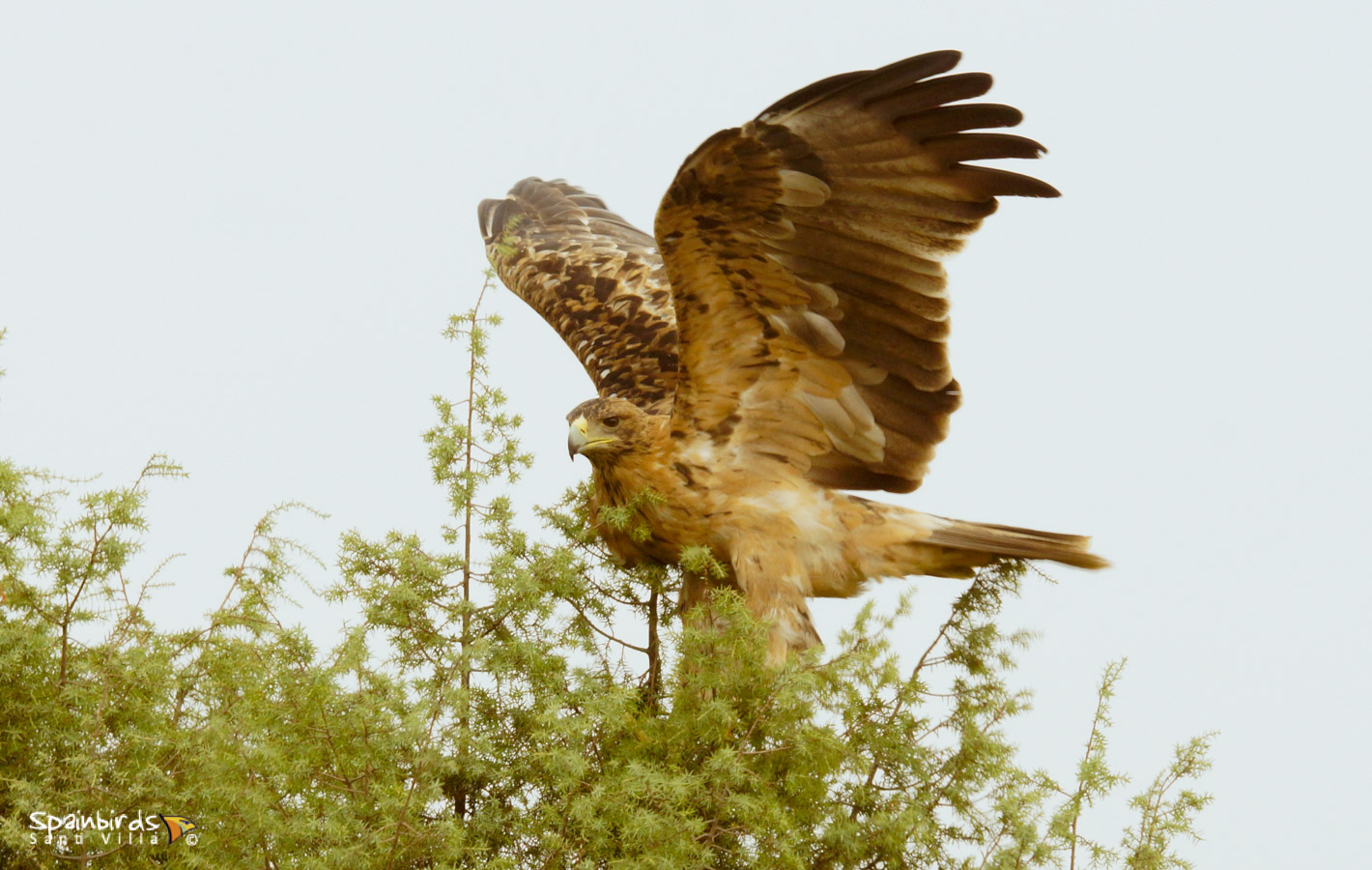
Spanish Imperial Eagle (3rd calendar-year, August) - Guadarrama Mnts. (Madrid)

Spanish Imperial Eagle (3rd calendar-year, August) - Guadarrama Mnts. (Madrid)
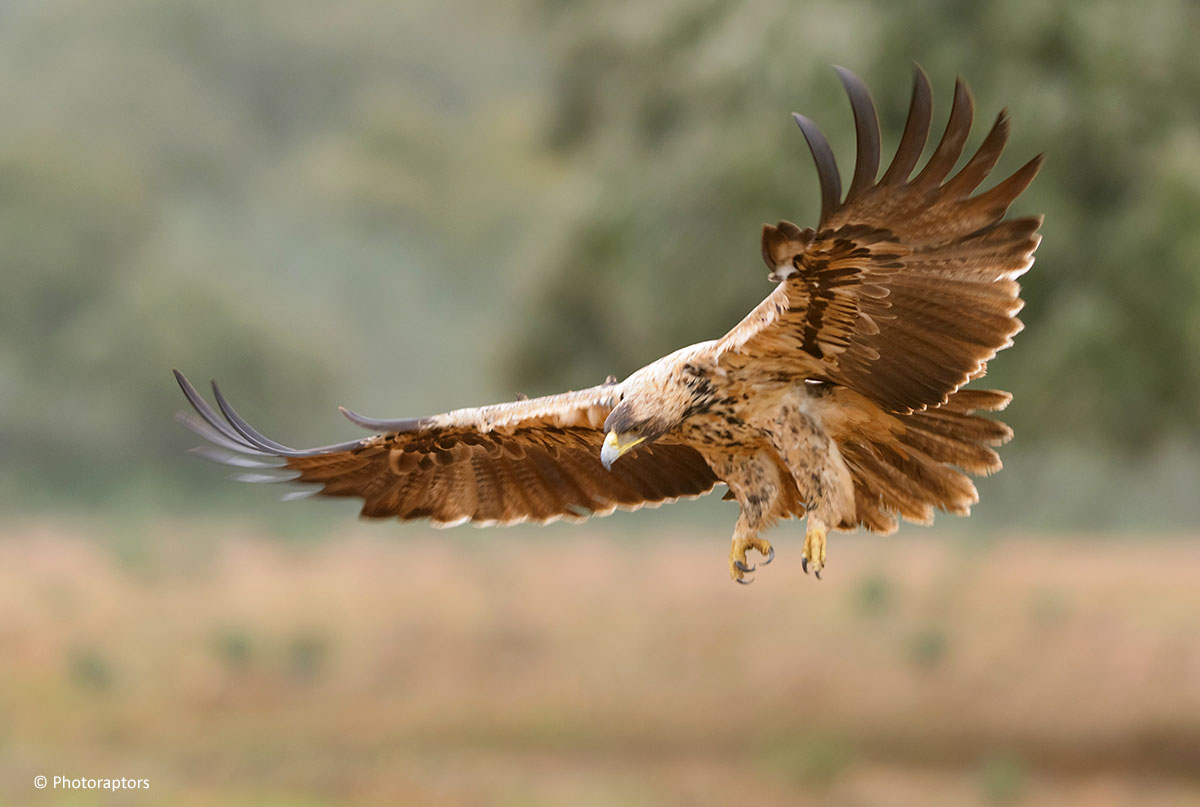
Spanish Imperial Eagle (3rd calendar-year, December) Female. Different bird to previous two photos - Sierra de San Pedro (Extremadura)
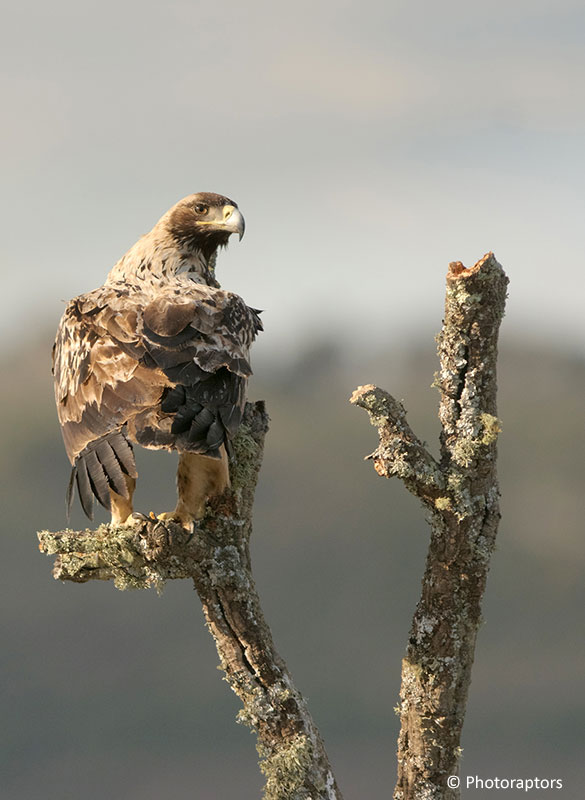
Spanish Imperial Eagle (3rd calendar-year, February) Female. Same bird to previous photo three months later - Sierra de San Pedro (Extremadura)
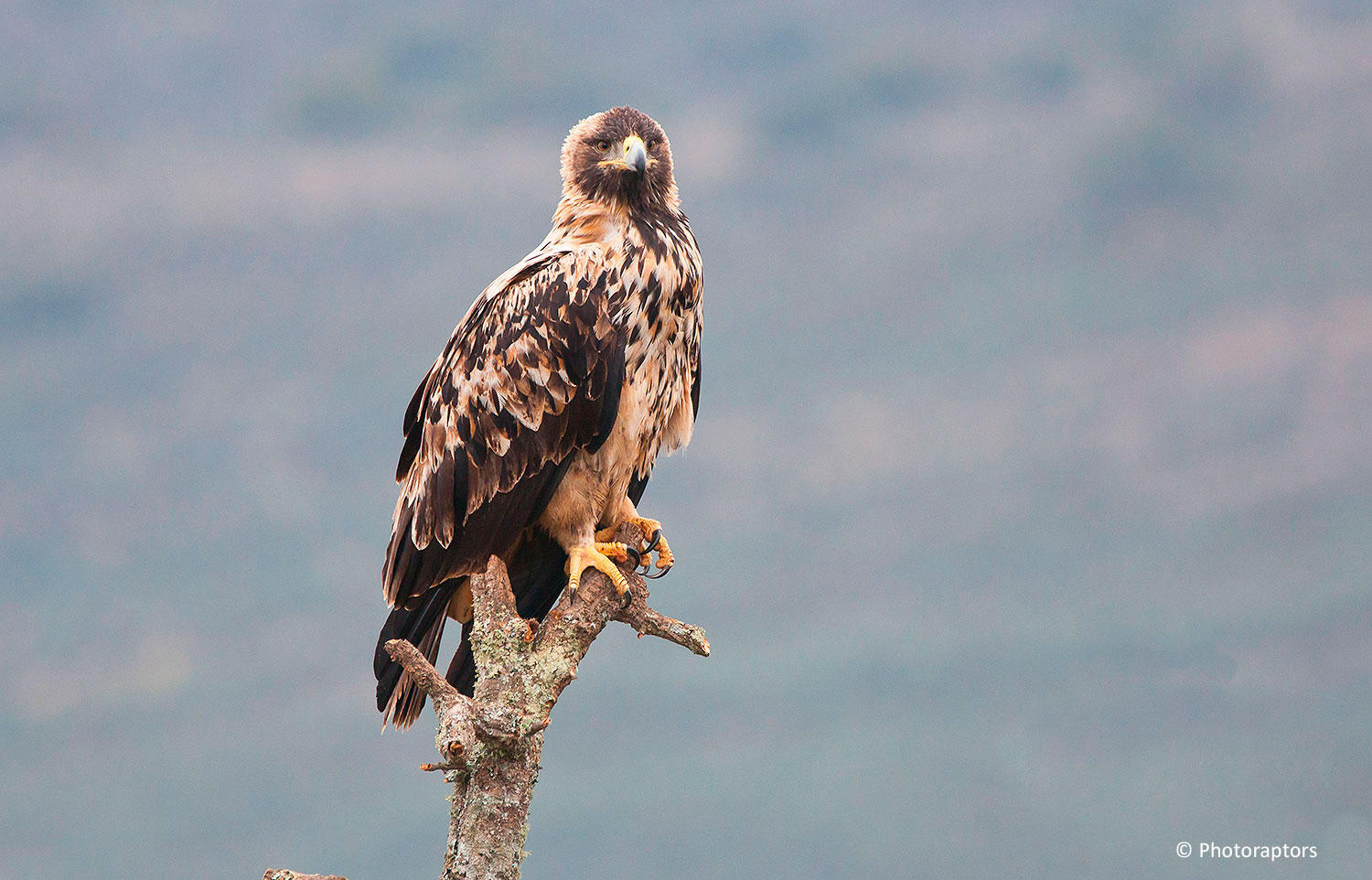
Spanish Imperial Eagle (4th calendar-year, March) - Sierra de San Pedro (Extremadura)
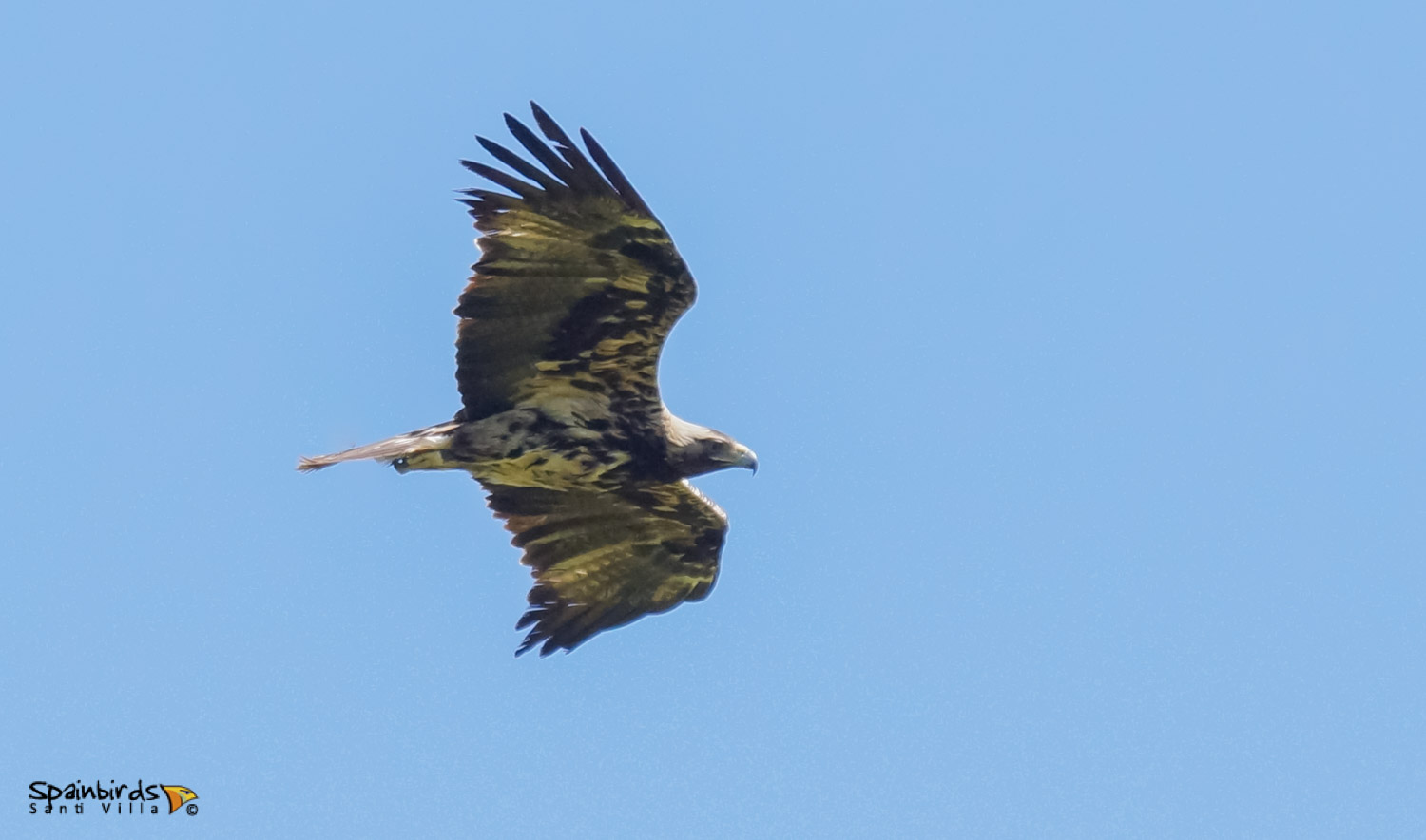
Spanish Imperial Eagle (4th calendar-year, May) - Sierra Norte (Seville)
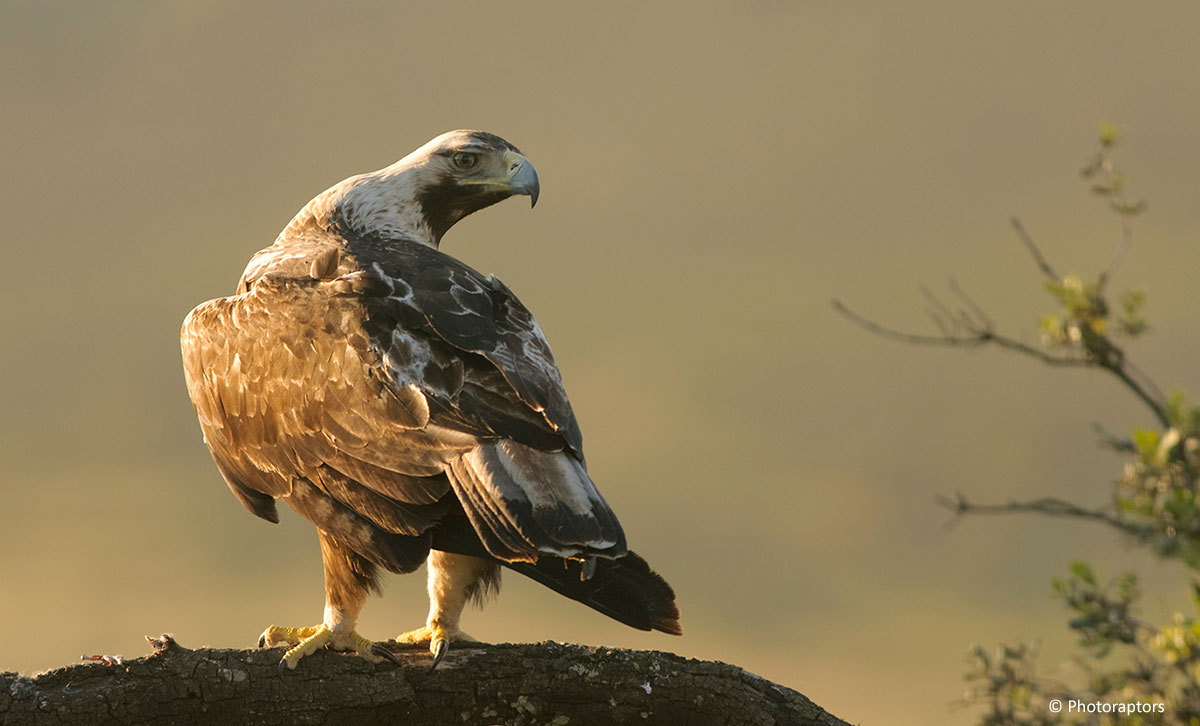
Spanish Imperial Eagle (Subadult 5th calendar-year) Male - Sierra de San Pedro (Extremadura)
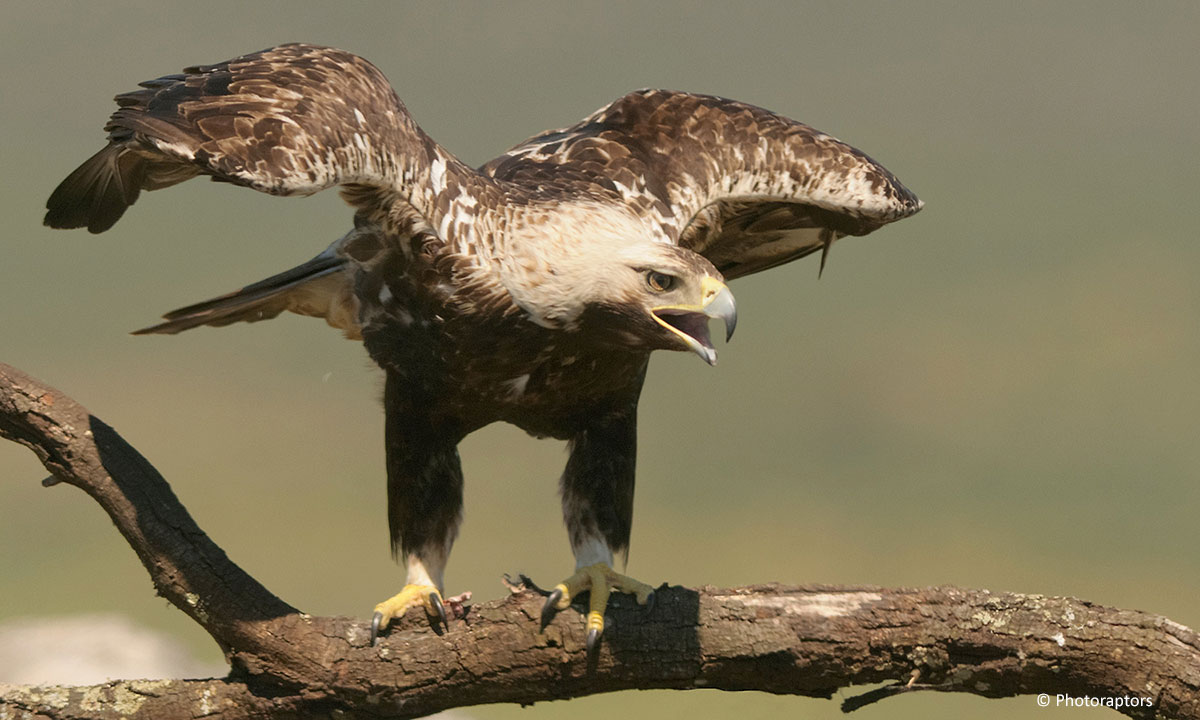
Spanish Imperial Eagle (Subadult 5th calendar-year) Male - Sierra de San Pedro (Extremadura)
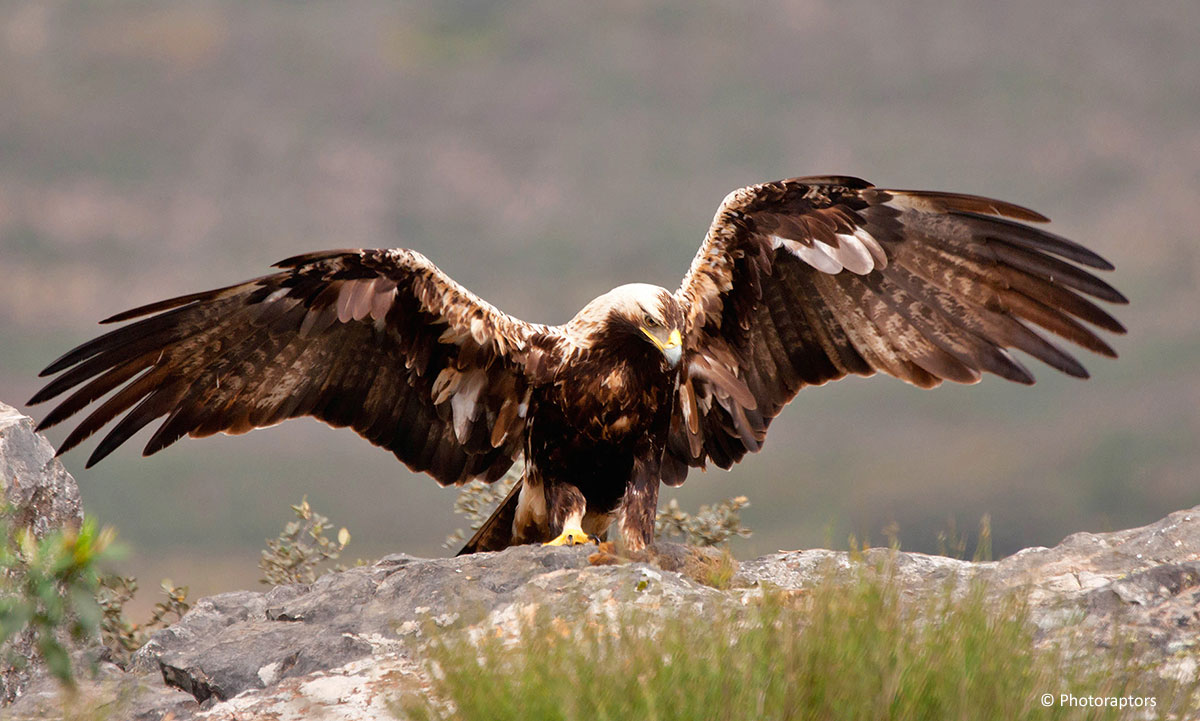
Spanish Imperial Eagle (Subadult 5th calendar-year) Male - Sierra de San Pedro (Extremadura)

Spanish Imperial Eagle (Adult, 6th calendar-year and beyond) - Sierra de San Pedro (Extremadura)
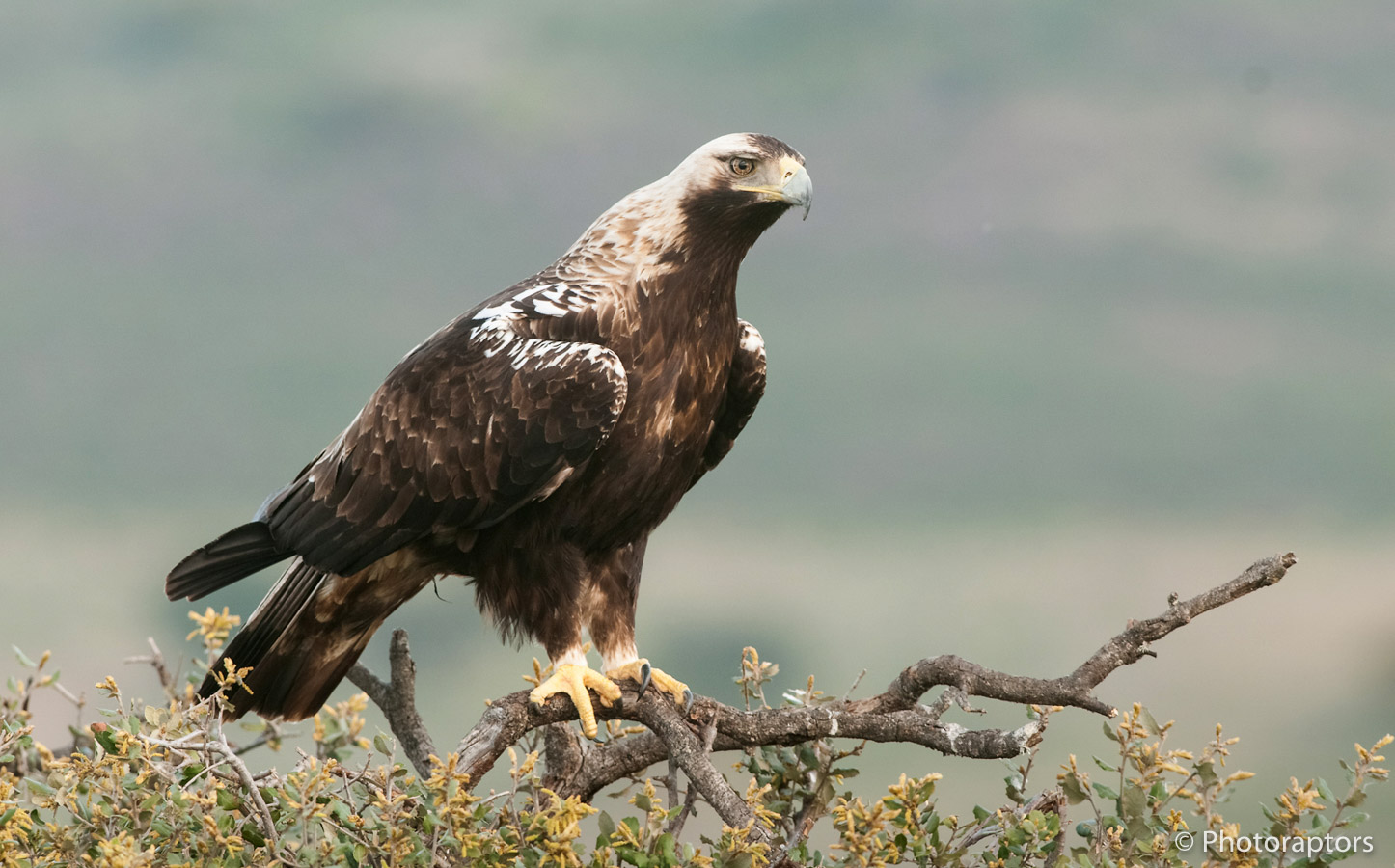
Spanish Imperial Eagle (Adult, 6th calendar-year and beyond) Hazel-like colour in eyes - Sierra de San Pedro (Extremadura)
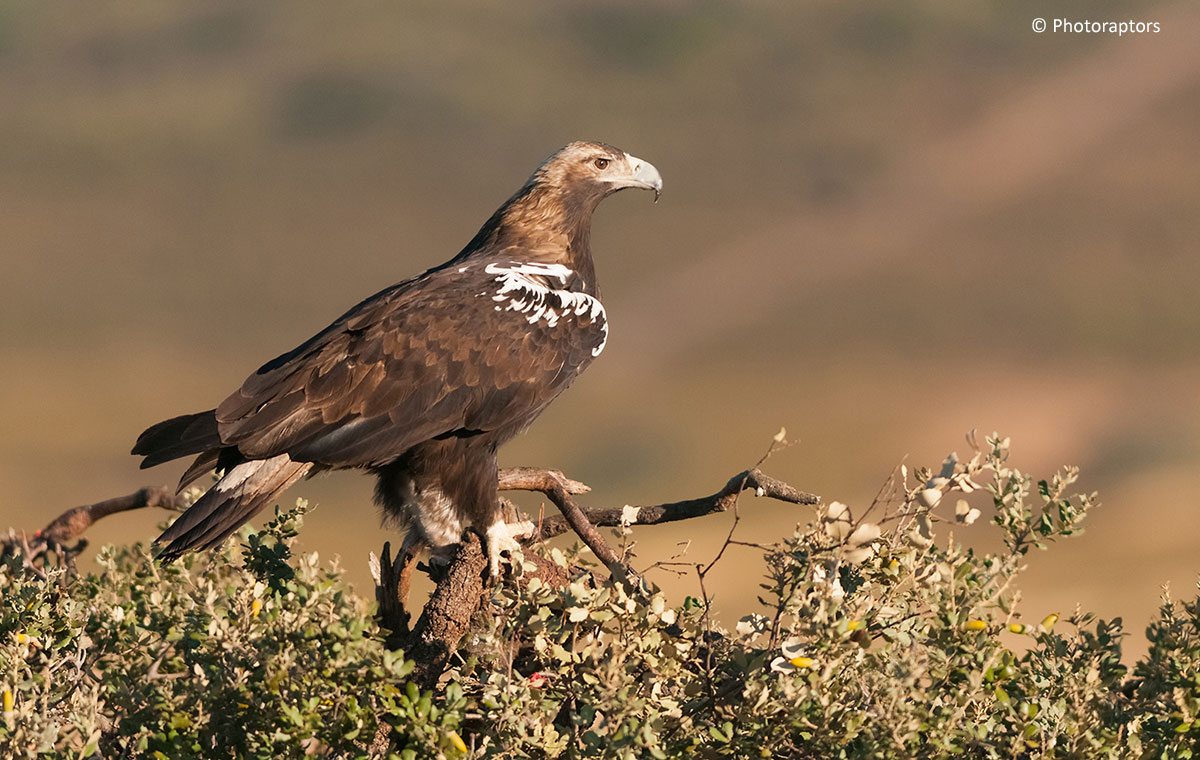
Spanish Imperial Eagle (Old-adult, a probably 12 year-old or more female) Pale yellow skin on toes and dark brown eye - Sierra de San Pedro (Extremadura)
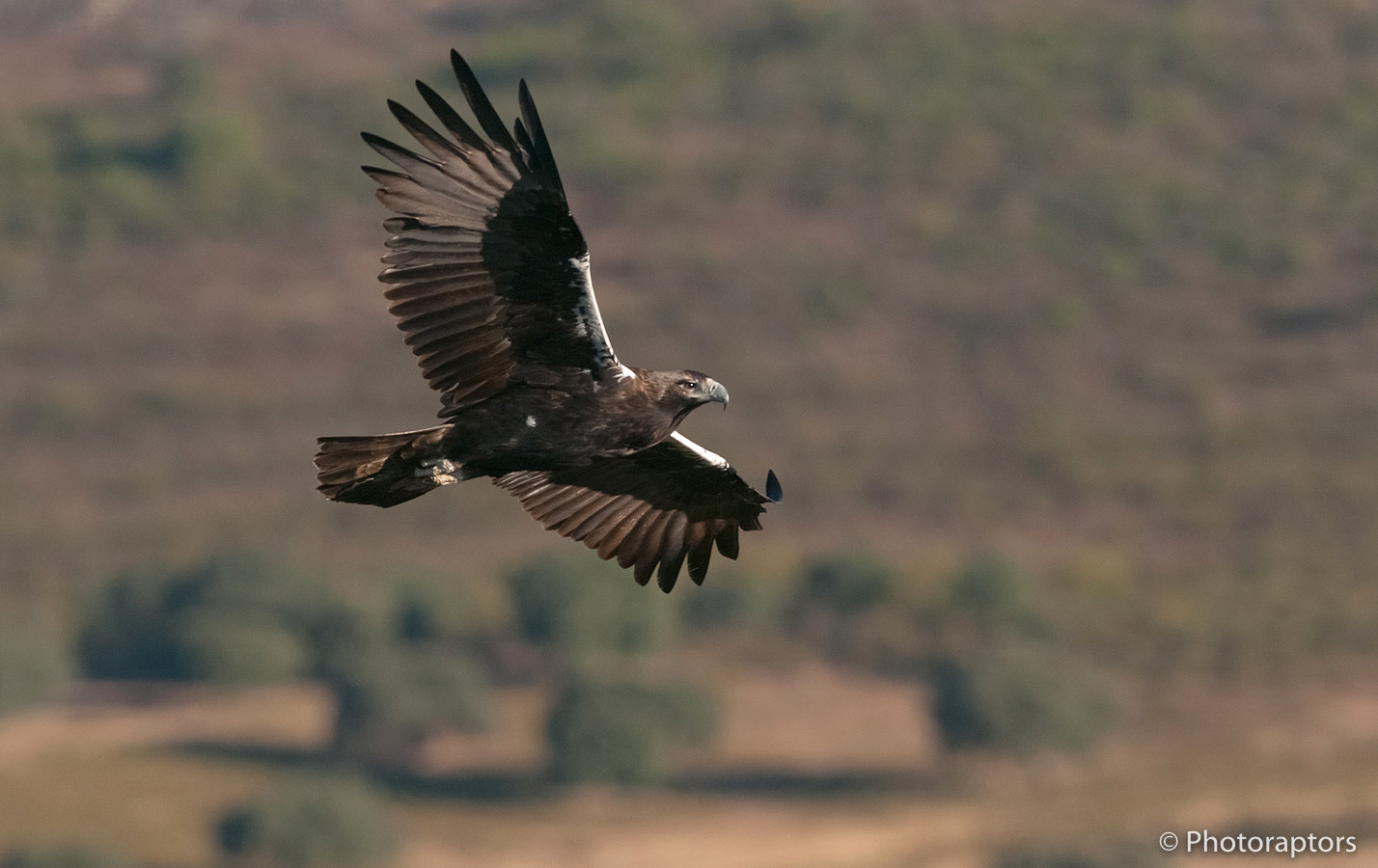
Spanish Imperial Eagle (Old-adult, a probably 12 year-old or more female, same bird than previous photo) - Sierra de San Pedro (Extremadura)

Santi Villa, Spainbirds Nature Tours manager
With the collaboration of Photo Raptors (bird hides in Extremadura)
* Thanks to Helios Dalmau, Jose Gordillo, Rafa Torralba, Ángel Sánchez, Jose A. Sencianes and Javier Prieta for their various contributions. Special thanks to John L. Muddeman who kindly translated the original Spanish text into English

